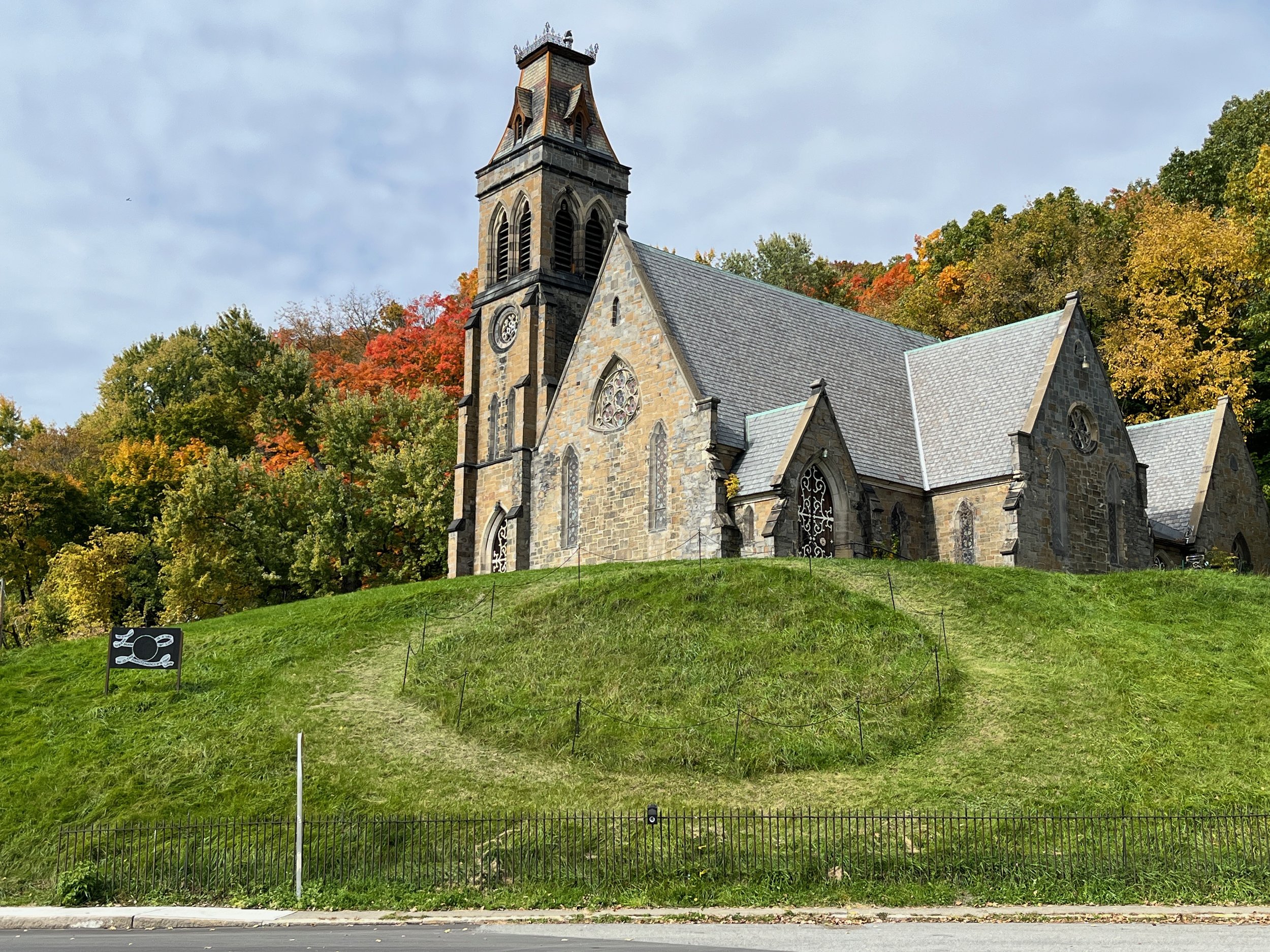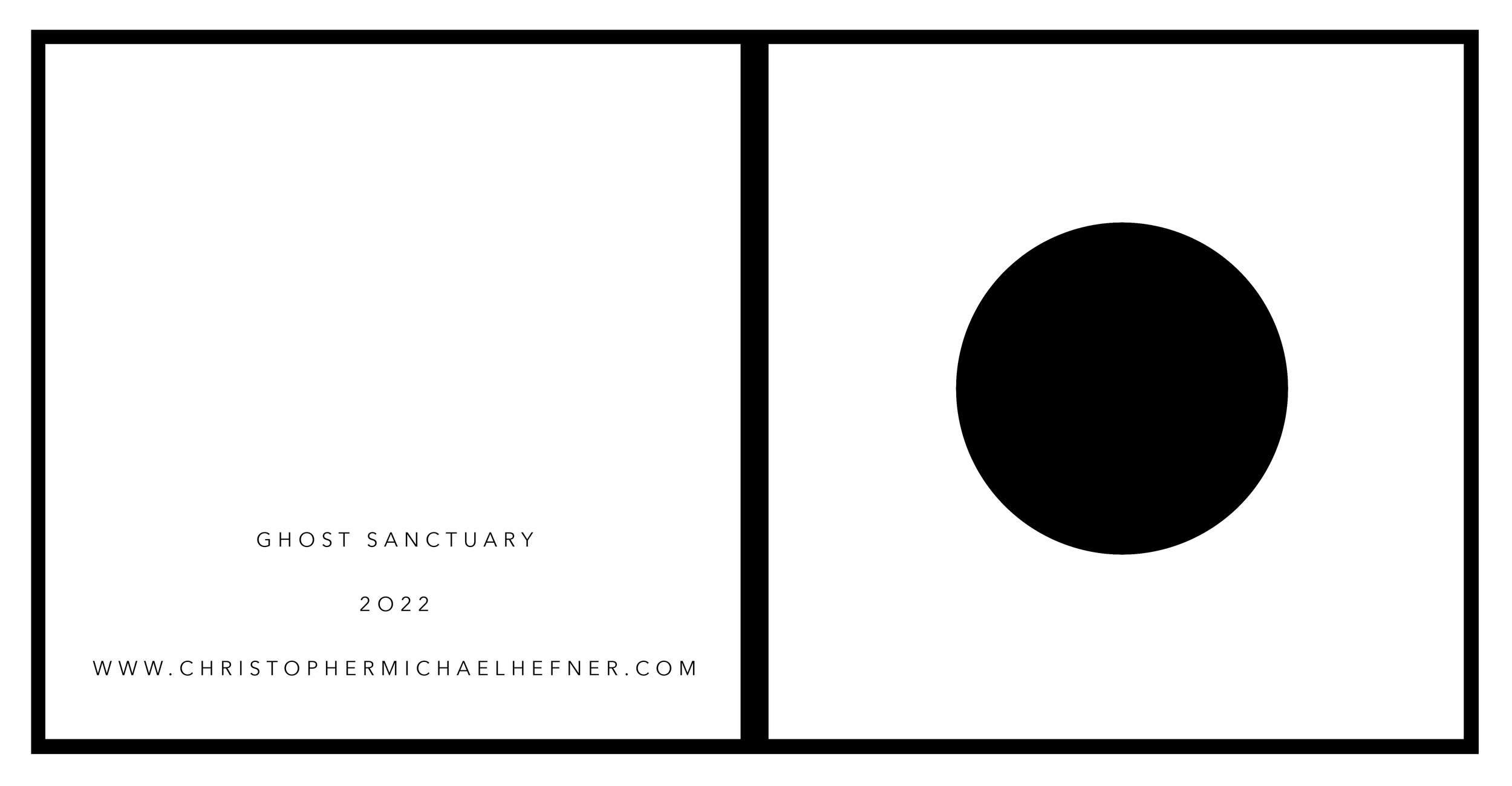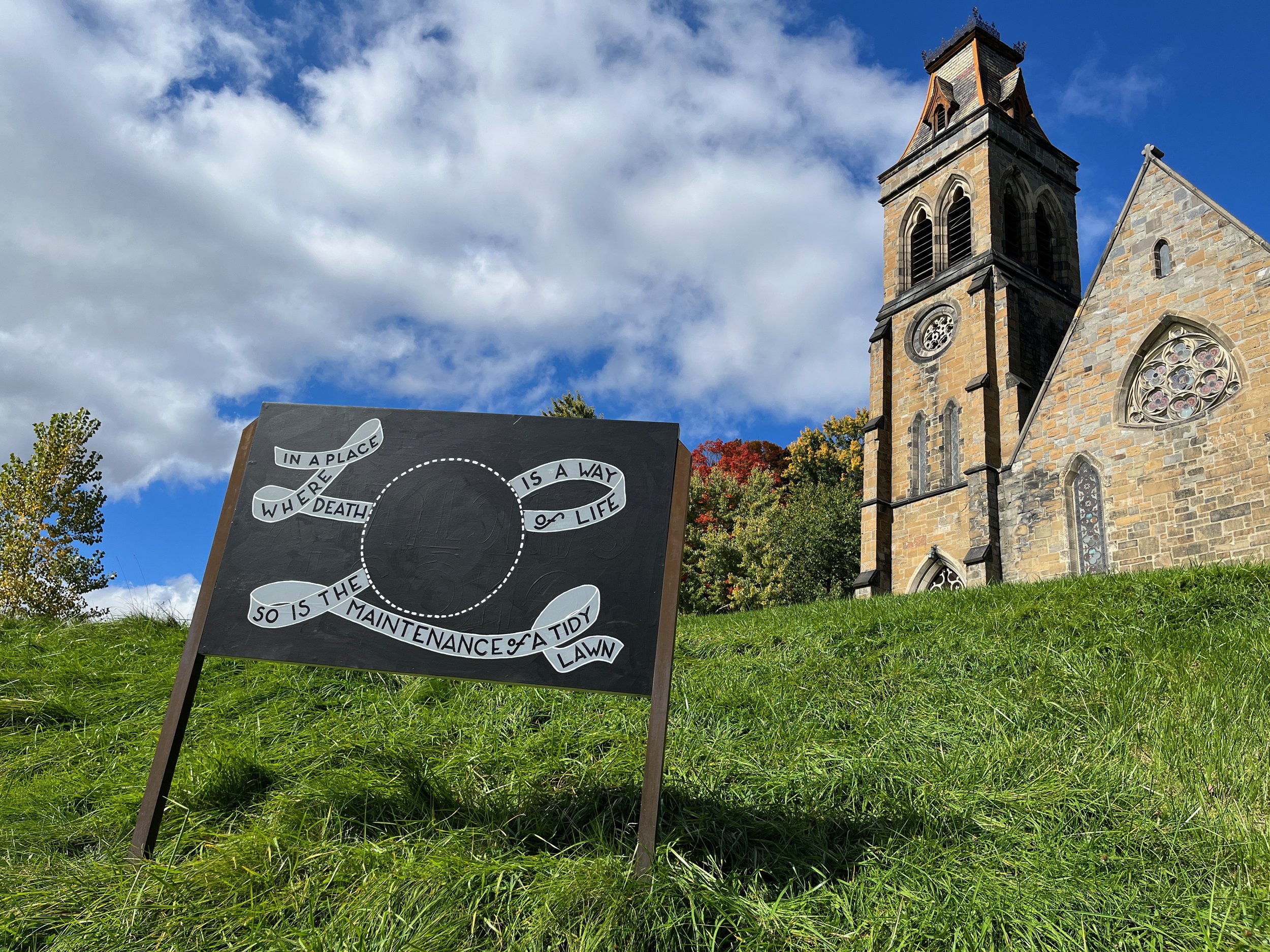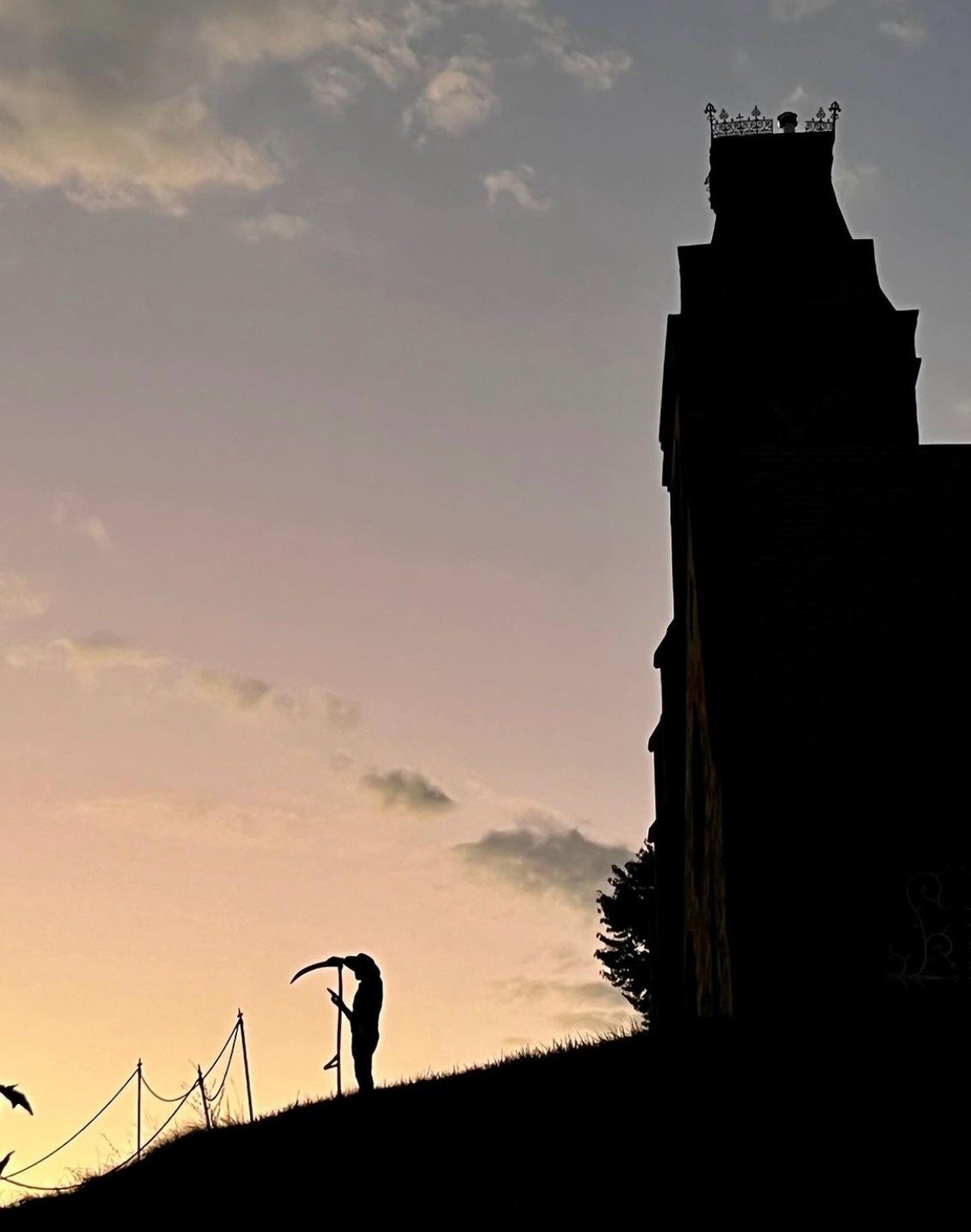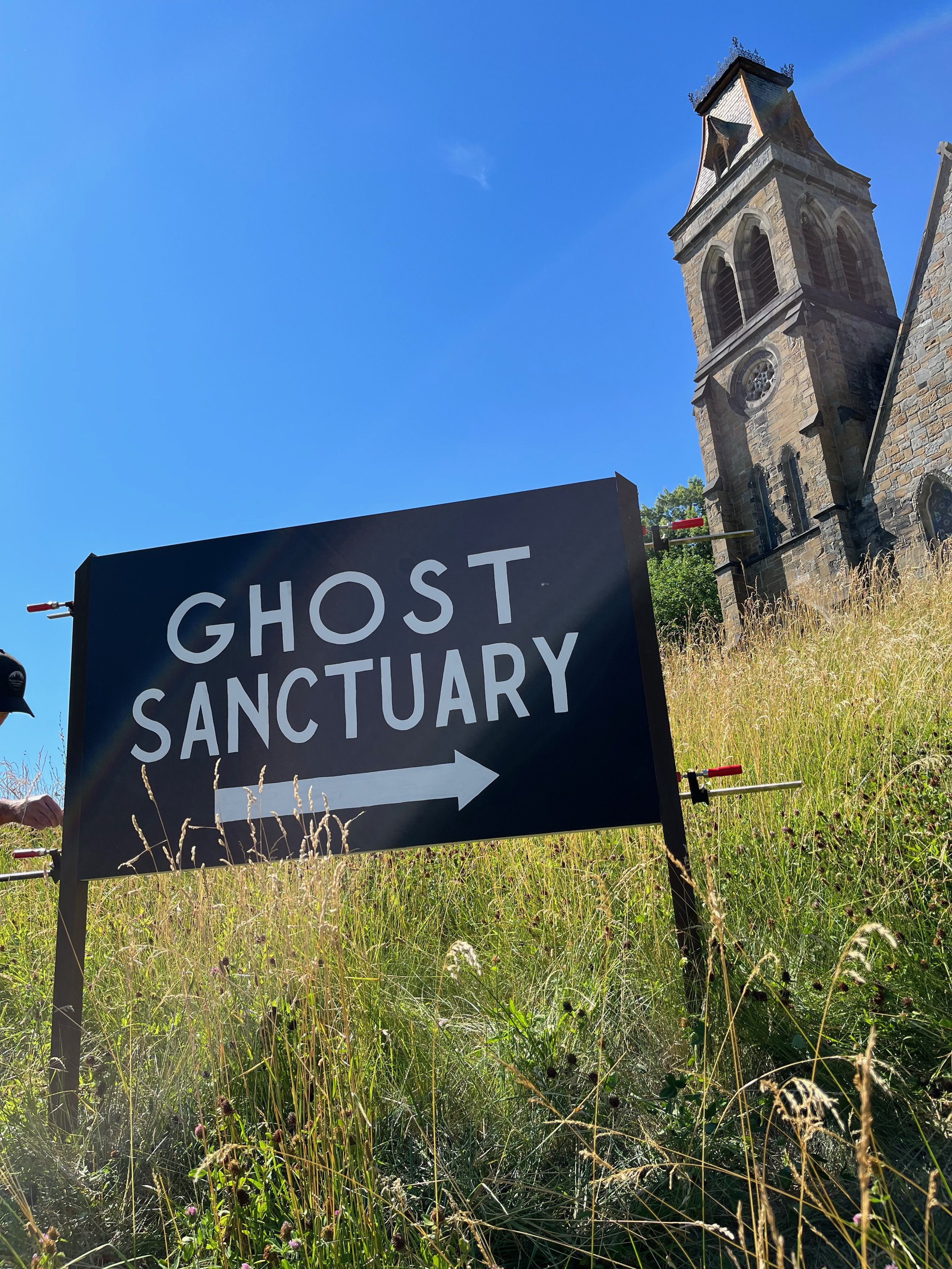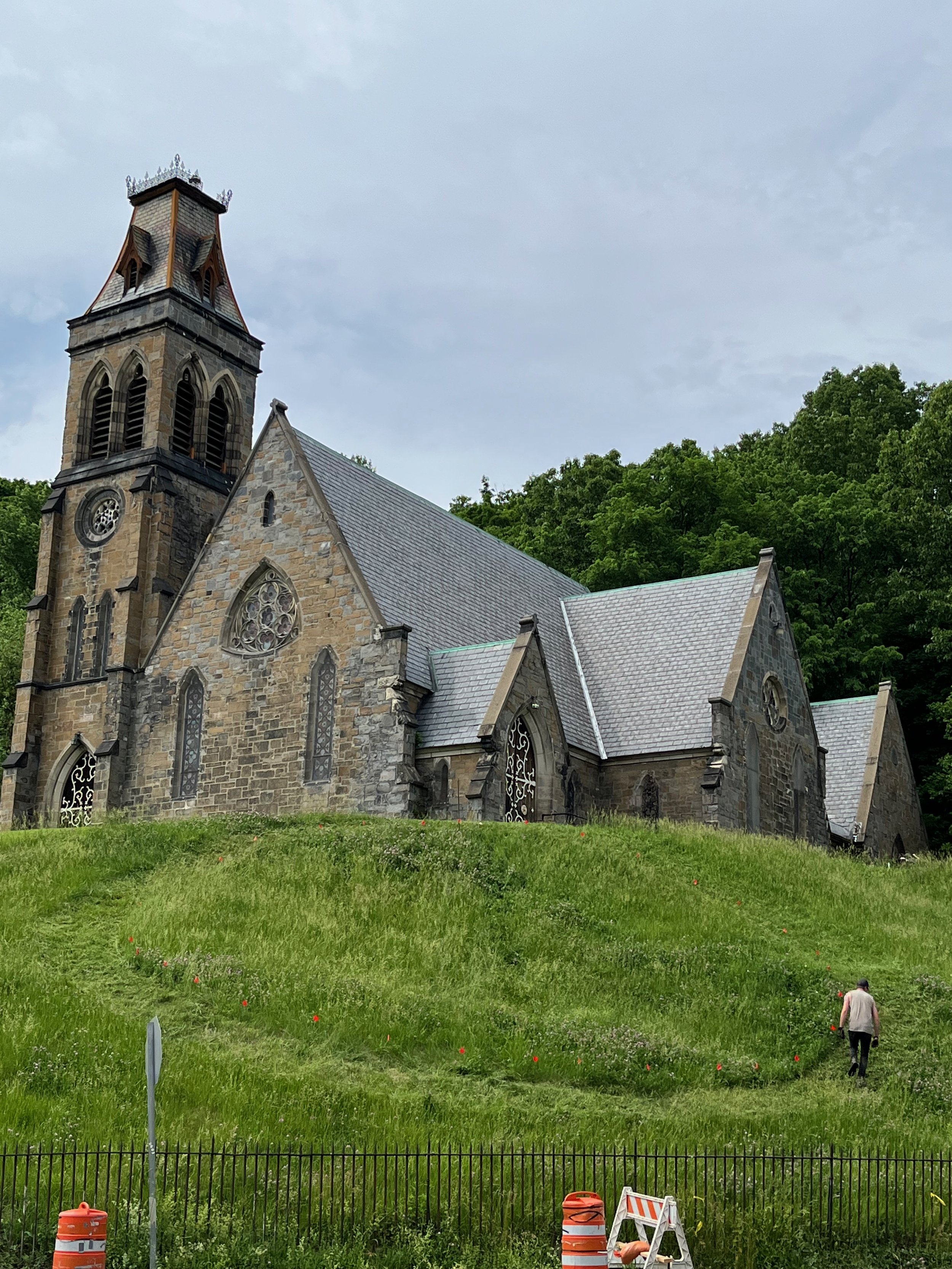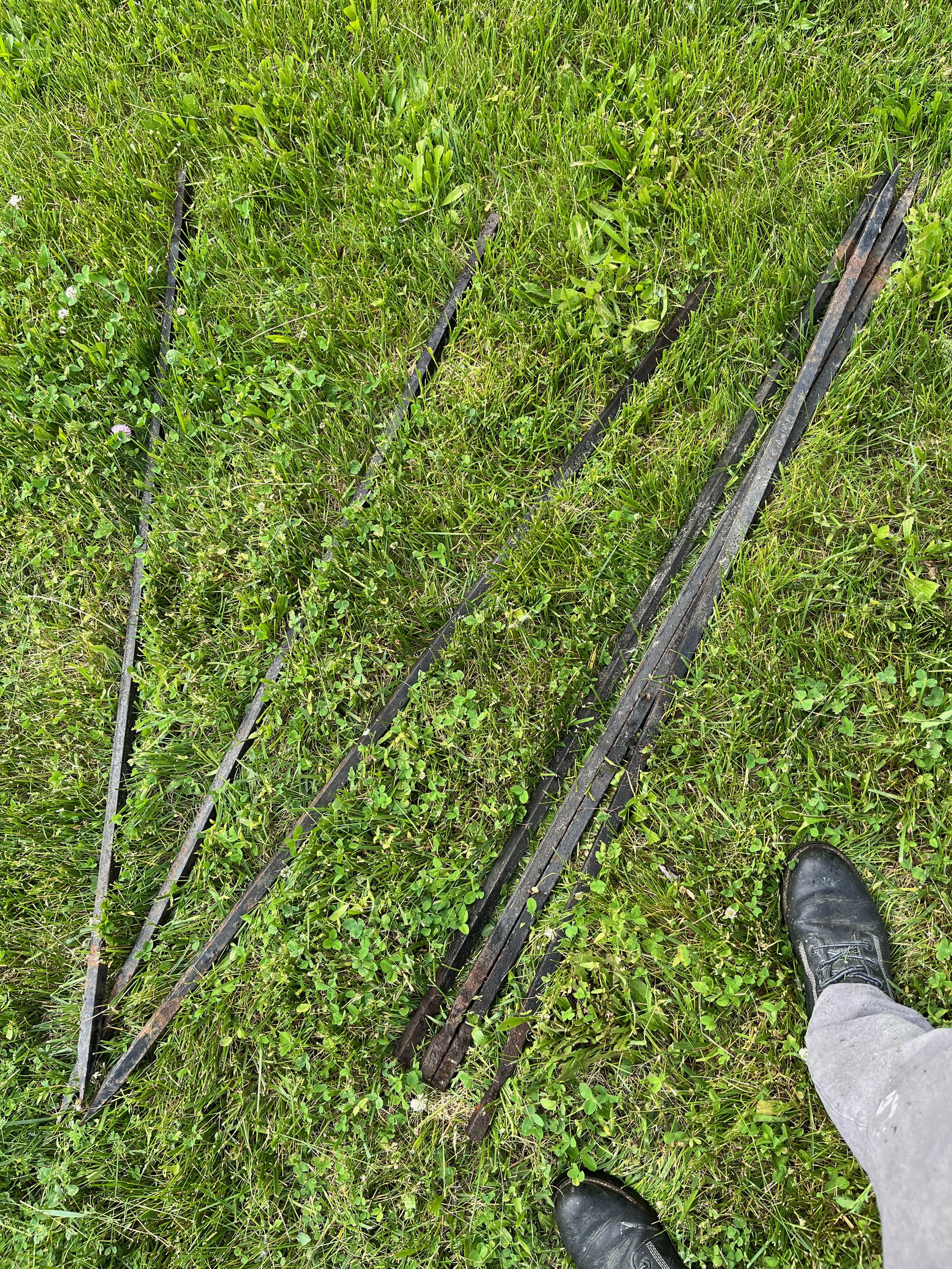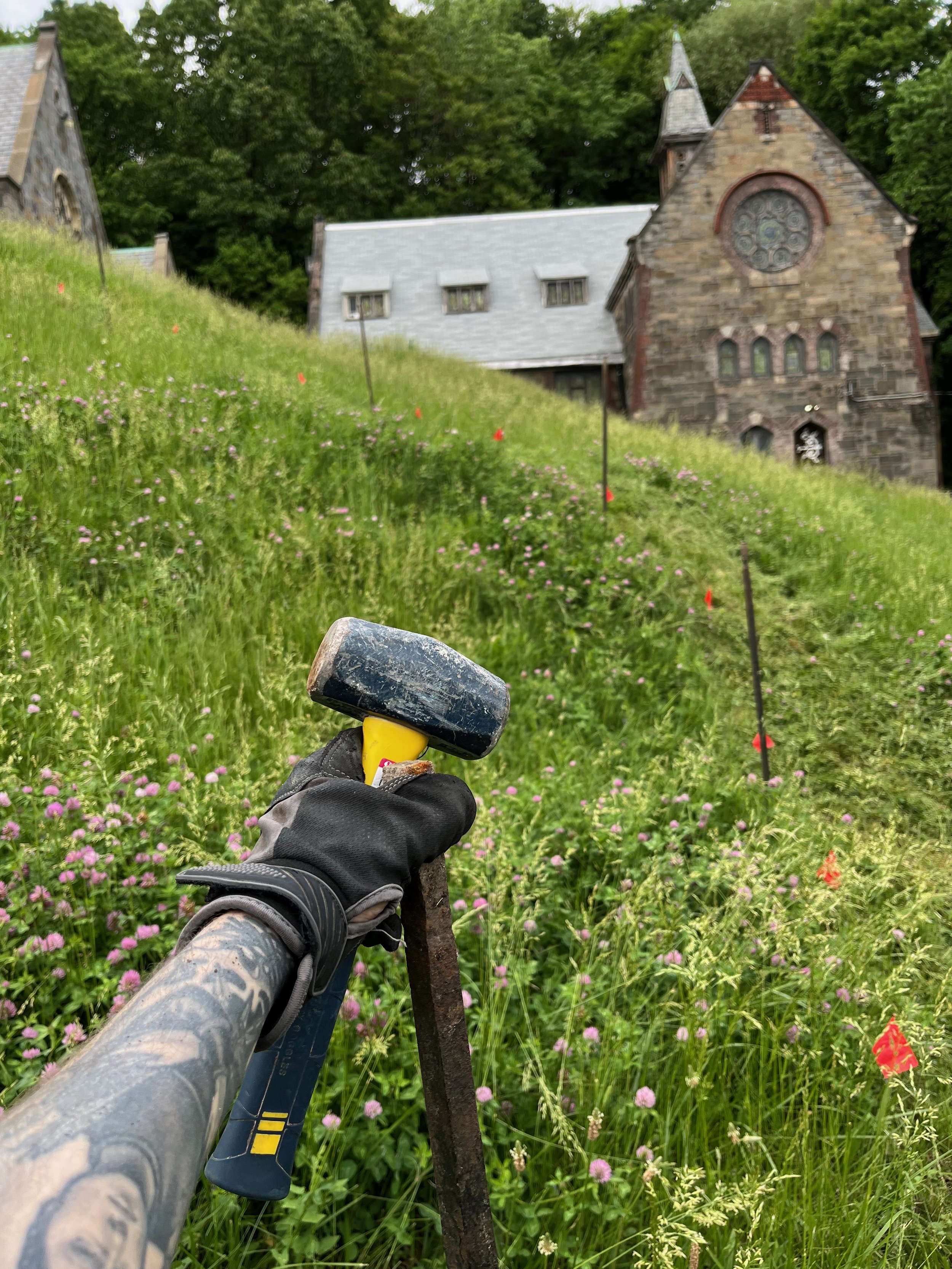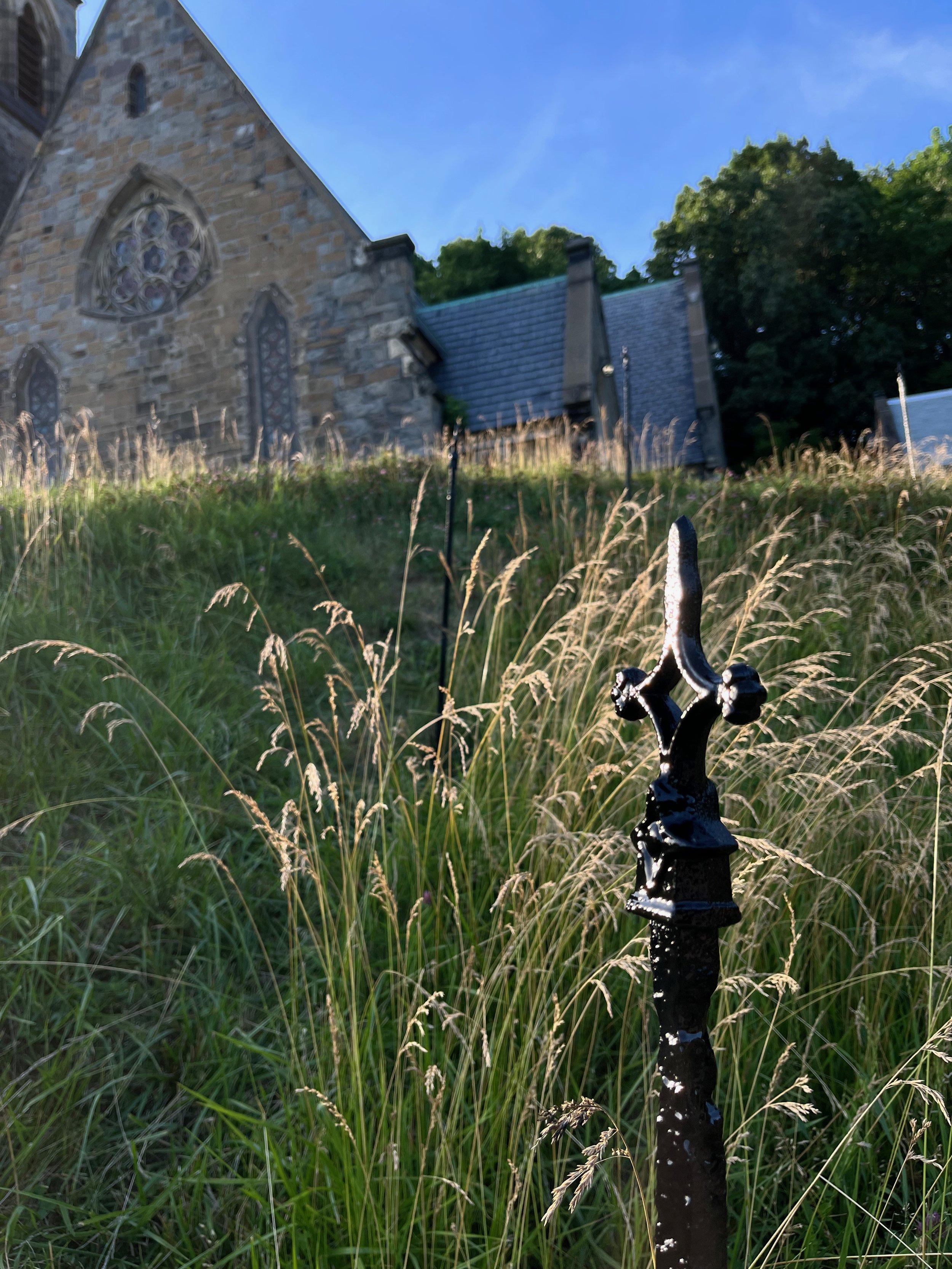Once I’d spent some time with the idea it began to sort of unravel and rearrange itself. Things that had seemed funny before became more earnest, things that were flippant and reactionary pulled toward more fastidious and labor intensive directions. What had begun as a dumb joke about the futility of lawn maintenance started to feel more significant and compelling to me. I did some thinking about OTHERS WHO HAVE UTILIZED PUBLIC SPACE FOR ELEGIAC PURPOSES. I thought about what it meant to disrupt and draw attention to something about which people in the neighborhood clearly had thoughts and feelings, or at the very least a quotidian view of. At this point it felt prudent to take a step back from the joke of it. Not, I hasten to add, to abandon humor altogether, because absurdity is certainly one of the guiding principles at work here, but to just stop and ask some questions:
1. What does it mean to mark out space in one’s lawn explicitly and exclusively for the use of The Dead?
2. And who, in the midst of a worldwide Mass Death Event, in shadow cast by the rise of domestic fascism and during the overtures of what may well become the complete (if protracted) extinction of life as we know it on Earth, ARE The Dead?
3. What is useful?
4. What is simply confrontational?
5. Maybe more importantly: what is usefully confrontational, and what does the territory between those two things look like?
6. At what point does something become visible for people, and why?
7. Can something be simultaneously visible, unexplained, dissonant and beautiful?
8. Does delineated quietude read as an affront?
9. Does my role as the person who is visibly altering the lawn center me too significantly in the narrative of the work?
10. How can I minimize this, if so?
11. What does the version of me who works on the lawn look like?
12. Does distancing that version too greatly from my normal, daily persona just create more problems than it solves (e..g. Who would that character be and doesn’t creating a whole new, living character only put more distance between the viewer and the intention of the work?)?
13. What does the territory between the person I am in daily life and the person who maintains the borders of a neighborhood park for invisible dead people look like?
14. What are the rules of the enclosure?
15. How is it delineated?
16. Is a fence gauche?
17. Is a lack of delineation unceremonious and invisible?
18. What would a fence look like?
19. If the area is roped off, what does the rope look like?
20. What holds it up?
21. If there are fence posts, what do they look like?
22. What sort of finials are appropriately stately but not disruptive?
23. How does one direct attention in a roadside situation, particularly one that not only doesn’t require but necessarily prohibits interaction?
24. Is a sign stupid, funny, appropriate or all three?
25. I want a sign, but where should it go?
26. What should it say?
27. What should it look like?
28. Should there be an arrow?
29. Black on white or white on black?
30. How often should I mow the borders, and how?
31. Daily?
32. How long should I spend mowing the borders?
33. What time of day? Should it be the last hour of the day or a more fluid period of time that spans the end of sunset and the beginning of night?
34 If I use a scythe to maintain the borders, will the shorn grass create problems, maybe even catch fire in the sun if it lays too long?
35. Should I intermittently rake the shorn grass during the same time period during the twilight following the twilight when they’re shorn?
36. Do I work clockwise or counter-clockwise?
37. What do I say if people ask me about this while I’m working?
38. Can I listen to headphones while I work, or does that disrupt the image?
39. Does the image matter?
40. What happens when the grass starts growing back before I get to the outer edge of the lawn?
41. Should I photograph it? When?
42. Should there be a pamphlet?
43. How should it look?
44. What should it say?
45. What should the tone be? (Authoritative/Friendly/Informative/Absurd/Laconic/Somber/Enthusiastic?)
46. How should the pamphlet be presented?
47. Do all of these elements need to be finished before it is presented?
48. Should I tell other people about it?
